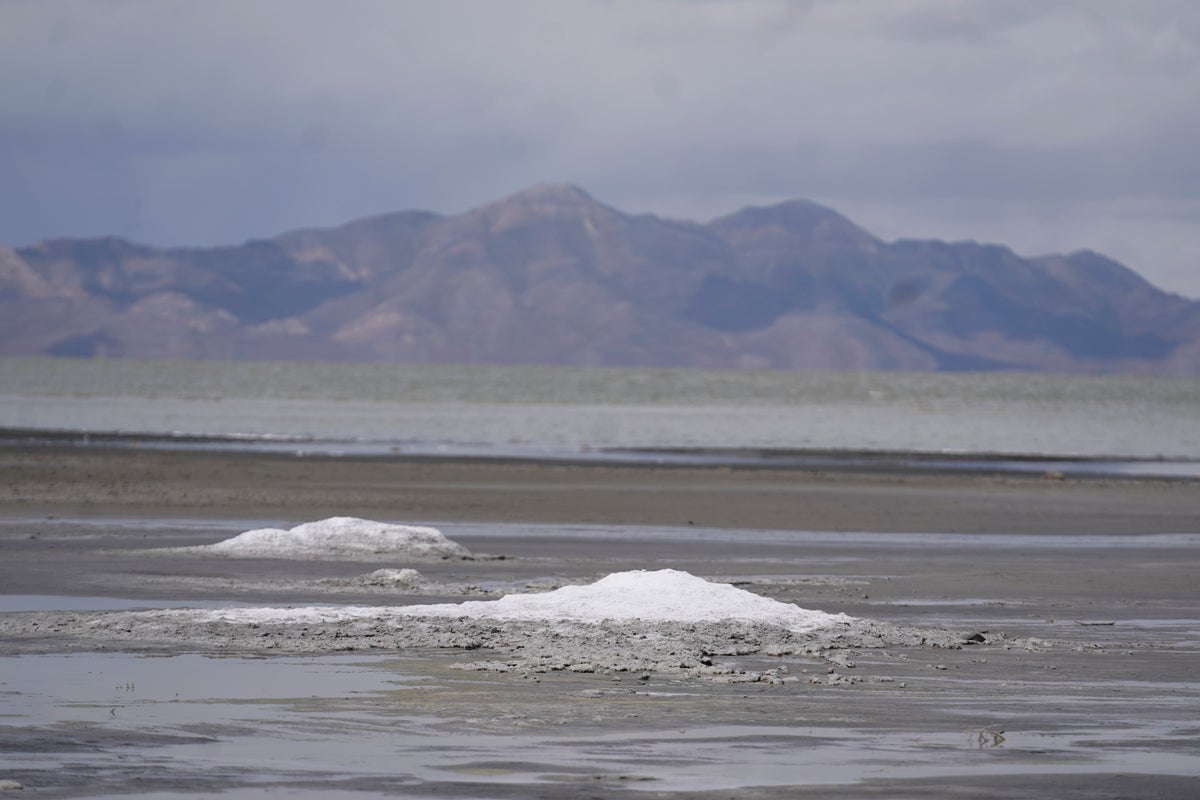
Park rangers in Utah are concerned and confounded by the appearance of strange white mounds along the shorelines of the Great Salt Lake.
Over the last several winters, rangers have noticed that the lake's usually flat southern shoreline has been pocked by unusual white mounds popping up along its shoreline.
Angelic Anderson, a ranger at the Great Salt Lake State Park, told Gizmodo that she and other rangers grew so concerned by the mounds that they reached out to other state agencies for help.
“We were very concerned,”she said. “One of our rangers contacted the Utah Geological Survey looking for answers.”
UGS geologists responded and collected samples from the mounds. Their tests determined that the piles were a type of salt formation called a mirabilite mound, which is sometimes called Glauber's salt.
The formations are generally rare and occur when underground water reacts with minerals and then bubbles up to the surface. When the mixture mingles with cold air, it forms white crystals, which then solidify into the chalky, white mounds.
The mounds were first spotted in 2019. Generally the section of the lake where they cropped up would be covered in water, but the lake's levels have dropped significantly over the last three years to record lows thanks to worsening drought conditions throughout the west.
This has provided an ideal environment for the mounds to grow. The UGS report suggested that the mounds may eventually seal off their initial water source, which forces the groundwater to find a new path to the surface. When that happens, a new mound forms, continuing the cycle.
Ms Anderson said each year since 2019 they have found more mounds, and often larger mounds than in years prior.
“But this year, we’ve recorded 15, the most we’ve ever seen," she said. "They’ve also gotten bigger, with one measuring three feet in height. Last year there was also one that was 35-feet long.”
The emergence of the mounds has spurred local tourist interest thanks to their coverage in the news. Rangers have begun leading tours to the mound sites, and a local university has started collecting samples to study the biology of the structures.
Lending to the interest is the fact that the mounds are temporary; the mounds need the cold air of winter to form, and as temperatures rise through the spring and summer, the mounds collapse into a thin layer of white powder called thenardite.
It's unlikely conditions at the lake will change significantly enough in the next few months, so it is likely that a new set of mounds will show up this winter along the shoreline.







